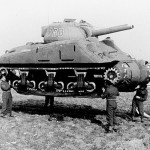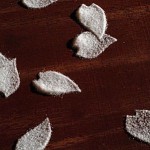Written between 1519 and 1520, Dell’arte della guerra (The Art of War) was the only historical-political essay published by Niccolò Machiavelli during his lifetime, but it was arguably the lesser known compared to The Prince and the Discourses on Livy.
In seven books, the author treats themes of military theory and strategy (based on training, discipline, and classification), acknowledging the role of war as an extension of politics, whenever diplomacy fails. Due to his frequentation with ancient literature, Machiavelli presented the strategies of Rome’s Republican-time legions as a valid model even for the XVI Century, despite the increasing role firearms was acquiring within the army.
The treatise was written as a Socratic dialogue and it was destined to Florentine rulers, encouraging the adoption of local, trained militia instead of hired mercenaries, as it was the fashion then.
At the end of the seventh book, Machiavelli includes a series of “figures”: diagrammatic plans of battalions, armies, and encampments as “explained in the narration:” true models for the configurations of an army. In each one of the seven figure, the author described the ordinanza, an arrangement or disposition of troops across a territory. In order to describe the plan, a particular typographical system was devised, that associated specific alphabetic types to the corresponding types of soldiers on the battleground. “This form of abstract representation, which reduced men to letters and troops to geometrical figures,” Francesco Marullo writes in his Ph.D. thesis “Typical Plan”, in a chapter titled “The End of the Siege,” “was inherited from the old Tactics of Aelian (Aenas Tacticus), a Greek military writer who, in the II century B.C., edited one of the firsts known treatises on war and military stratagems, describing the different formations of the hoplites’ phalanx through typical forms and parameters applicable in different wars and strategies.”
In the famous woodcut The Siege of a Fortress by Albrecht Dürer (Dürer, Marullo explains in the footnotes citing G.Beltramini, was aware of Machiavelli’s studies on military theory), Marullo sees a visual and conceptual analogy between the regularity and compactness of the rendered troops and the image of buildings: “In this way, the mathematical order of war-machines, first translated into the geometrical organization of the city, was here definitely applied on human bodies, to frame their movements and administer their cooperation.”
In “The End of the Siege”, Marullo attempts a connection between such abstract systems of military representation and the reduction of the city and its architecture to a non-figurative plan as the one of Archizoom Associati’s Hypothesis for a non-figurative architectural language (1970). Archizoom echoes the “isotropic condition and the typological continuum of capitalist production” in this drawing and in other images from the series No-Stop City, devising an analogous typographic system that would describe items distributed across an abstract territory. Since it was produced on a typewriting machine, the plan is the result of the inherent typesetting limitations, in terms of spacing, leading, tabs and indentation.
The following is a selection of pages from Art of War, translated, edited, with a commentary by Christopher Lynch, The University of Chicago Press.
We have included the notes and explanations in order to facilitate the reading of the diagrams. Further description here.










Further reading:
F.Marullo, Typical Plan. The Architecture Of Labor And The Space Of Production, (Ph.D. thesis, 2014)
G.Beltramini (ed.), Andrea Palladio and the Architecture of Battle: With the Unpublished Edition of Polybius’ Histories, Marsilio, 2010.
Paolo Fabbri, “I sensi della battaglia” (a semiotic of the arts course on the plastic representations of battle throughout history).




Leave a Reply